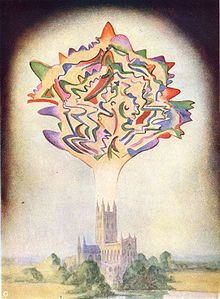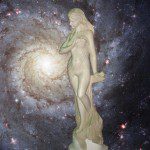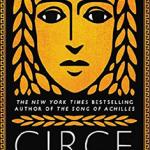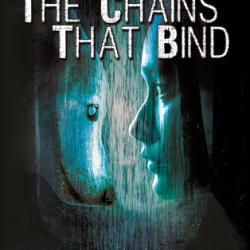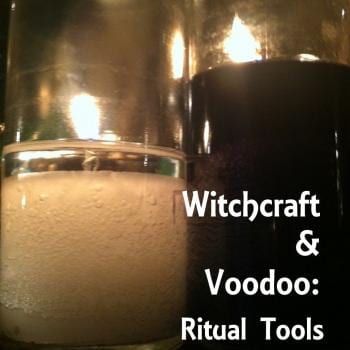Everything old is new again; or so they say. Recently I was intrigued by something I discovered while making a study of science fiction. The video I was watching attributed the idea to William Gibson, most famously the author of Neuromancer. They referred to the concept as “semiotic ghosts.” To me, they were talking about egregores.
Here’s the video I watched on semiotic ghosts so that you can check it out and learn more about the idea:
Now if you aren’t aware, Gibson is credited with having conceived of the idea of cyberspace, and he gave it its name. The essence of the idea is present in earlier works, such as “True Names” by Vernor Vinge, but he certainly popularized the concept, if nothing else. I have found myself wondering on many occasions how these concepts that seem to me to be clear egregores found their way into popular culture. I think perhaps now I know.
Wikipedia has a very brief explanation of an egregore:
Egregore (also egregor) is an occult concept representing a “thoughtform” or “collective group mind”, an autonomous psychic entity made up of, and influencing, the thoughts of a group of people. The symbiotic relationship between an egregore and its group has been compared to the more recent, non-occult concepts of the corporation (as a legal entity) and the meme.
Since we also describe egregores as “thoughtforms,” I checked out what Wikipedia had to say about that as well. I found it as a subsection of the Tibetan Buddhist idea of a Tulpa:
Tulpa is a concept in mysticism and the paranormal of a being or object which is created through spiritual or mental powers.[1] It was adapted by 20th century theosophists from Tibetan sprul-pa (Tibetan: སྤྲུལ་པ་, Wylie: sprulpa) which means “emanation” or “manifestation”.[2] Modern practitioners use the term to refer to a type of willed imaginary friend which practitioners consider to be sentient and relatively autonomous.[3] The difference is that the original tulpa represents a shell to manifest something in it and in modern terminology to form or create something directly.
And what they had to say about “thoughtforms” was this:
Thoughtform
The Western occult understanding of the concept of “thoughtform” is believed by some to have originated as an interpretation of the Tibetan concept of “tulpa”.[1]
The concept is related to the Western philosophy and practice of magic.[10][page needed] Occultist William Walker Atkinson in his book The Human Aura described thought-forms as simple ethereal objects emanating from the auras surrounding people, generating from their thoughts and feelings.[11] He further elaborated in Clairvoyance and Occult Powers how experienced practitioners of the occult can produce thoughtforms from their auras that serve as astral projections which may or may not look like the person who is projecting them, or as illusions that can only be seen by those with “awakened astral senses”.[12]
The theosophist Annie Besant, in her book Thought-forms, divides them into three classes: forms in the shape of the person who creates them, forms that resemble objects or people and may become “ensouled” by “nature spirits” or by the dead, and forms that represent “inherent qualities” from the astral or mental planes, such as emotions.[13]
Essentially, a thoughtform is a semi-autonomous manifestation created when someone — or several someones — will it, or believe it, into being. As of that point, it is no longer entirely subject to the will of its creator(s), but in essence, acts and reacts in its own way. It has no physical reality as we understand it, but it has a virtual reality; it might as well be real because we engage with it as if it is. Which, in a sense, makes it real. Occult folk would say that it manifests on the astral plane, and since the astral plane reflects the material one and vice versa, it can have real effects on the physical plane as well.
An egregore is a thoughtform that has been created by a group, and it influences the thoughts and actions of the group that engages with it. But it is also influenced by the thoughts and actions of these same people.
The examples of a corporation and a meme are probably excellent ones for a modern person. A corporation exists independently of its creators. The Board of Directors, the shareholders, and the employees who work for it, can change completely — leave, die, or be replaced — and yet the corporation continues. Other examples, as much as people might not want to accept the thought, include deities, or the idea of a particular nation. (“America” is an egregore. “Canada” is an egregore.) Money is also an egregore.
It’s extremely difficult for one person to significantly alter the nature of an egregore. A person who wants to will such a change would have to convince most of the other people who engage with the egregore that its nature has already changed. For example, these major brands either started their lives as Nazi corroborators, or developed significantly as corporations while doing so, but of course we no longer make these associations with them.
Similarly, semiotic ghosts are symbols in the collective consciousness that inform our view of the world. Sometimes those ideas haunt us to the exclusion of many others. I touched on this idea in my book The Witch’s Eight Paths of Power. The study of the Craft is effectively training ourselves to use a shorthand of symbols to access their egregores — or semiotic ghosts, if you will — for our own use and benefit. In Persuasions of the Witch’s Craft, anthropologist T.M. Luhrmann describes how she rejected embracing the semiotic ghosts of English magical practitioners, although of course she doesn’t describe it that way.
I think we ought to pay more attention to Taylor Ellwood and the work of the pop culture magicians. I think they’re on to something. Let us consider: Where do deities come from? At some point, somebody came up with the idea of them and a group formed an egregore. Whether or not that egregore survives is in part determined by the number of people who engage with it, or the influence of those who champion it.

Don’t think that I am discounting the idea of literal deities! The jury is still out on that one for me. Let’s consider: if we created an egregore with enough consistency and durability of identity to form a deity, then one of the attributes of such a creature, by nature, is that it exists beyond space and time as we understand it. Perhaps we created the deities so that They could create us — and perhaps They did indeed create us in order to create Them. Perhaps They continue to engage with us so that They can maintain the essence of Their established natures — and continue to exist.(1)
Maybe it’s a bit like cloud data storage. We upload our content to “the cloud” — but where is it, actually? Cloud technology works by utilizing fragments of unused data storage capacity — microbits that hardly register on any given system — that are contributed by the millions of systems that engage with cyberspace. So it doesn’t really get stored anywhere; the cloud forms a virtual storage cell from the microfragments of storage capacity that exist all over the world.
The question then becomes for the magician: how can we best utilize these egregores? Should we embrace even some of the modern ones, such as fandoms? And can we make significant changes to the harmful effects of existing egregores?
I think the answer is that the common people must direct the egregores — the semiotic ghosts — instead. Right now, we have been absorbed by the semiotic ghosts of futility and apathy. And Money has become a god in and of itself. Some of our semiotic ghosts are ancient, and they perpetuate these others, such as the ghost of the Great Man. To combat this, we must embrace new egregores, and helpful, older egregores, like the Enlightened Rebel, the Warrior Woman, and the Will of the People.
Look for my article on the egregore of money and how we can influence it in Gods & Radicals next month.
- Seeds of my concept of this are probably attributable to American Gods by Neil Gaiman and The Change books by S.M. Stirling.
Hey! Did you know I’m now offering online classes in magick, including the Eight Paths courses? Details at my Teachable site!

